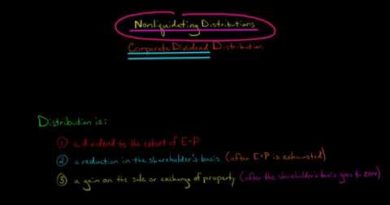EU Digital Tax & Global Tax Deal | EU Digital Levy
At a recent G20 meeting of finance chiefs, French Finance Minister Bruno Le Maire declared that the chances of Pillar One succeeding are “slim” and therefore “a digital tax should be extended to the European level as soon as possible.” This analysis of Pillar One’s status is not surprising, and Le Maire’s reaction is in line with previous EU statements.
However, it raises important questions for policymakers: Is EU taxation a revenue-raising mechanism or just a geopolitical tool? If it’s both, which should the EU prioritize?
Geopolitically, the EU has tried for years to use access to its Single Market to influence policy in third countries. This is commonly referred to as the “Brussels effect,” and has traditionally been carried out through the EU regulatory regime and standard-setting efforts. The General Data Protection Regulation (GDPR), Digital Markets Act (DMA), and Digital Services Act (DSA) are recent examples of this phenomenon.
In most cases, companies that used the Single Market were expected to bear the costs of these regulations.
The role of European taxation in creating the “Brussels effect” has generally been limited to the Value-Added Tax (VAT) system, anti-tax evasion policies, and transparency measures, because taxation is a national competence. The focus of these policies is primarily to increase the efficiency of the Single Market (through the freer exchange of goods and better Member State tax enforcement) rather than geopolitical competition.
In many cases, 27 Member States need to unanimously agree to adopt tax policy at the EU level, or EU policymakers must prove that the tax is solving some Single Market deficiency. This is usually difficult to achieve legally and politically.
More recently, however, the EU started to add different types of European tax policy to its “Brussels-effect” toolbox.
In 2018, international discussions on taxing the digital economy began to accelerate at the Organisation for Economic Co-operation and Development (OECD). Parallel efforts took place on designing a global minimum tax rate. The result of these discussions became Pillars One and Two as we know them today.
At the same time, the EU attempted to adopt an EU digital services tax (DST) primarily targeted at large American tech companies. While the proposal failed to gain the required support of all 27 Member States, it gave momentum to a series of national DSTs in EU Member States like France, Austria, and Spain, to name a few.
These policies led to a trade dispute with the United States resulting in a 2021 “DST ceasefire” between the U.S. and those European Member States with national DSTs. As a compromise, EU Member States agreed to roll back existing DSTs once Pillar One took effect.
If Pillar One is finalized at the OECD, then the EU has scheduled possible domestic revenues to become a new EU own resource. Furthermore, at the end of 2022, the Council of the EU unanimously adopted the EU’s Pillar Two implementing directive.
Given the nature of Pillar Two, EU implementation by the end of 2023 makes adoption in other countries more likely. For example, Japan, South Korea, and the United Kingdom are all moving ahead this year.
It also gives the EU a greater say over how policies in other countries are considered under the Pillar Two framework. According to the most recent OECD guidance, the U.S.’s Global Intangible Low-Taxed Income (GILTI) provision will not be considered a qualified Income Inclusion Rule (IIR) under the Pillar Two regime. This is even as GILTI’s effective rate will be increasing to 13.125 percent (and could be 16.4 percent or higher depending on exposure to foreign taxes) starting 1 January 2026.
If the U.S. decides to reform GILTI in the future, then the EU (and its Member States) would have a significant say in whether to accept a reformed GILTI as a qualified IIR. This is one example of how the EU has managed to leverage its Single Market to change global taxation.
In other words, the “Brussels effect” is not only impacting the profits of firms using the Single Market, but it is now also directly impacting tax bases in countries outside of the EU. The recently agreed upon Carbon Border Adjustment Mechanism (which has the economic effects of an EU border tariff), the proposed Green Deal Industrial Plan to compete with the American Inflation Reduction Act, and the EU Commissioner for the Internal Market Thierry Breton’s plan to charge (American) tech companies a fee to pay for European infrastructure could all eventually fall into this categorization as well.
Despite some policymakers’ desire to increase the EU’s role in global affairs, the use of European tax policy in geopolitical economic competition has three main risks.
First, it could incite retaliatory tax or trade measures from foreign governments against EU governments and firms (like the U.S. response to digital services taxes). These retaliatory measures could have unequal and negative economic impacts throughout the EU.
Second, it could lead to European tax policy being influenced by changing geopolitical situations, not consistent principles. In general, this would be less efficient and could threaten investment and economic growth. Based on the current Green Deal Industrial Plan ideas that prioritize subsidies over market competition, some prominent policymakers fear the EU’s response will ultimately fall into this trap.
Finally, as Minister Le Maire’s comments suggest, European tax policy design may prioritize social ideology or geopolitical battle lines over raising sufficient revenue for government spending priorities. The negative consequences of this approach to tax design have already resulted in the windfall profits tax debate.
As a result, the EU has put itself in a position where spending is locked in while revenue is uncertain. In 2021, the European Commission proposed three new own resources to help fund the EU budget.
However, revenues from CBAM are going to be zero for at least the initial phase, if not longer. Additionally, Pillar One has yet to be agreed to at the OECD and a new digital levy would not raise a large amount of revenue.
Therefore, the EU will turn to a new basket of new own resource proposals later this year that will be “linked to the corporate sector.” Others in the European Parliament have called for more EU-level taxes that focus on social policy implementation rather than revenue-raising efficiency.
Meanwhile, €800 billion in COVID-19 relief money (called NextGenerationEU) has already started to be spent and needs to be paid back with interest starting in 2028. Not to mention the fact that interest rates are increasing to slow inflation, and the EU’s AAA rating relies on timely repayment.
The most likely options to repay NextGenerationEU are to either raise more EU revenue through new own resources, increase Member State payments to the EU budget in the next Multiannual Financial Framework (MFF), or cut EU spending in the next MFF by at least 10 percent.
On top of this current budget shortfall, the EU is looking for ways to finance more support for Ukraine, provide relief for EU citizens affected by increasing energy prices, and borrow more money at the EU level to fund EU subsidies in the wake of the Inflation Reduction Act.
If the EU wants to strategically compete with economic powers like the United States or China, it needs principled, pro-growth tax policy that prioritizes efficient ways to raise revenue over geopolitical ambitions.
Another attempt at a European digital services tax (or EU digital levy) in the absence of Pillar One implementation may make EU policymakers feel geopolitically powerful, but it may cause greater damage to the European economy in the long term.






